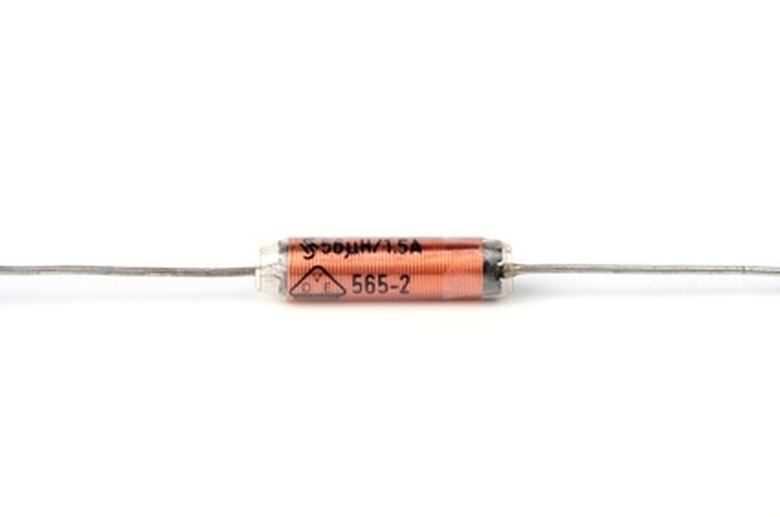How To Measure The Ohm Value For An Inductor
An inductor is a small electronic element that resists changes in an alternating current, or AC. It consists of a series of wire loops around a core that store energy in the form of a magnetic field, related to the current that passes through it. This effect, or inductance, is dependent on the material makeup and structure of the inductor. Reactance is a measure in ohms of the relationship between the inductance and frequency of the AC.
Step 1
Acquire the necessary data. You will need the inductance, measured in Henries, and the AC frequency, measured in Hertz. The inductance is usually written on the inductor itself or may be referenced in a schematic. The frequency is usually notated in an electronic schematic.
Step 2
Convert inductance as needed. Inductance is frequently expressed as micro-Henries, which represents 1,000,000 Henries. To convert to Henries, you would divide the number of micro-Henries by 1,000,000.
Step 3
Calculate reactance, in ohms, by using the formula: Reactance = 2 * pi * Frequency * Inductance. Pi is simply a constant, measured as 3.14.
Cite This Article
MLA
Taylor, C.. "How To Measure The Ohm Value For An Inductor" sciencing.com, https://www.sciencing.com/measure-ohm-value-inductor-7519932/. 24 April 2017.
APA
Taylor, C.. (2017, April 24). How To Measure The Ohm Value For An Inductor. sciencing.com. Retrieved from https://www.sciencing.com/measure-ohm-value-inductor-7519932/
Chicago
Taylor, C.. How To Measure The Ohm Value For An Inductor last modified March 24, 2022. https://www.sciencing.com/measure-ohm-value-inductor-7519932/
